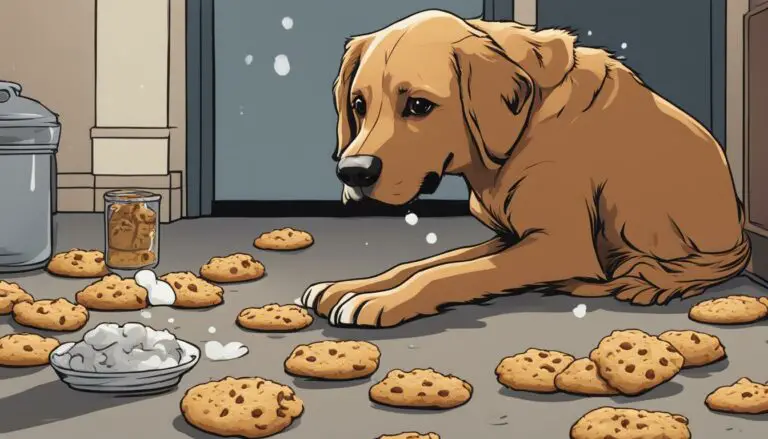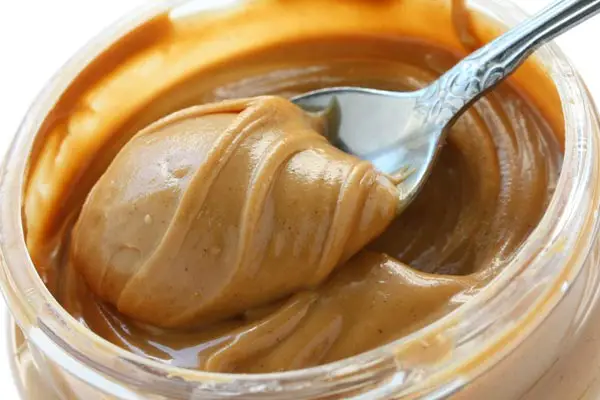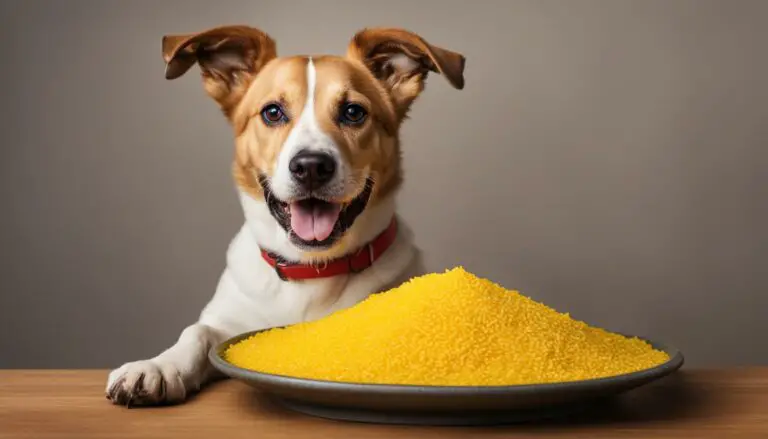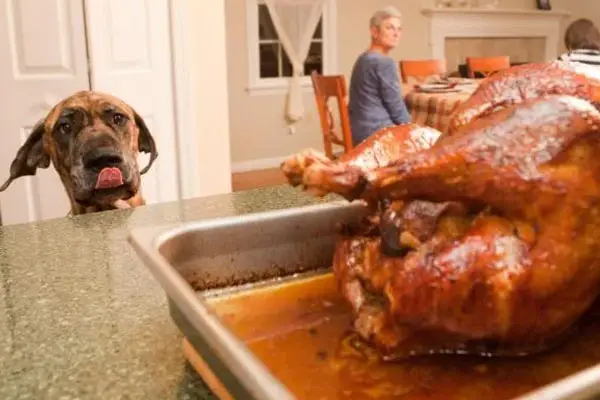My Dog Swallowed a Bone Without Chewing: A Critical Topic
Dogs are notorious for swallowing bones and other foreign objects. While some objects may pass through the digestive system without issue, swallowing a bone without chewing can be dangerous and potentially life-threatening. Surgical removal of the blocked object is usually necessary if a foreign body obstruction occurs.
Signs of a potential obstruction include vomiting, diarrhea, abdominal tenderness, decreased appetite, straining to defecate, lethargy, and changes in behavior.
Diagnosis often involves a physical examination, abdominal X-rays, and other tests to assess the dog’s health and rule out other causes of symptoms.
If an obstruction is confirmed, exploratory surgery is typically recommended to prevent further complications and potential necrosis of intestinal tissues.
The prognosis depends on various factors, including the obstruction’s location and duration, the bone’s size and characteristics, and the dog’s overall health. It is essential to consult a veterinarian for a proper diagnosis, treatment plan, and prognosis.
Can Dogs Digest Bones? Understanding the Risks
While some dogs may be able to digest bones, it is not guaranteed and can be risky. Bones can splinter, causing harm to the mouth, throat, and digestive system. Splintered bones can lead to choking, damage to the mouth, and potentially life-threatening obstructions.
Even if a bone is swallowed safely, it can still cause harm to the stomach and intestines, including lacerations and obstructions. Symptoms of a potential problem include pain, increased salivation, attempts to vomit, and difficulty defecating.
These signs should be taken seriously, and immediate veterinary attention is necessary. Dog owners must be aware of the risks associated with giving their dogs bones and seek safer alternatives such as bully sticks or treat-dispensing toys.
To illustrate the risks associated with bone digestion in dogs, here is a table outlining the potential consequences:
| Consequence | Description |
|---|---|
| Choking | Bone fragments can become lodged in the throat, causing choking and difficulty breathing. |
| Mouth and Throat Injuries | Bones can splinter and cause cuts or punctures in the mouth and throat, leading to pain and potential infections. |
| Gastrointestinal Obstruction | Bones can block the digestive tract, leading to constipation, vomiting, and abdominal pain. Emergency surgery may be required to remove the obstruction. |
| Internal Injuries | If a bone passes through the digestive system without being properly broken down, it can cause internal injuries, such as lacerations or punctures in the stomach or intestines. |
The Importance of Prompt Veterinary Attention
If you suspect your dog has swallowed a bone or is experiencing any symptoms related to bone ingestion, it is crucial to seek veterinary attention immediately.
Delaying medical intervention can worsen complications and increase the risk of severe consequences.
Your veterinarian will be able to assess your dog’s condition, conduct necessary tests such as X-rays, and determine the best course of action to ensure your dog’s safety and well-being.
Swallowed Chicken Bones: What to Do
Swallowing chicken bones can cause concern as they are weak and brittle and can easily splinter when chewed. If your dog has swallowed chicken bones, it is essential to take immediate action to ensure their safety and well-being.
Firstly, monitoring your dog closely for any signs of choking or obstruction is crucial. If your dog is showing symptoms such as coughing, gagging, or difficulty breathing, it is recommended to seek veterinary attention immediately.
Your veterinarian may need to perform an x-ray to determine the exact location of the bones within your dog’s digestive system.
Sometimes, if the bones are small and smooth, they may pass through the dog’s stool without causing harm. To help ensure safe passage, you can give your dog a small piece of soft food, such as bread, to help cushion the bones in the stomach and protect the intestinal lining.
However, it is crucial to continue monitoring your dog’s stool for any signs of blood or discomfort. If the chicken bones are not seen in your dog’s feces after 72 hours, it is advised that you seek a veterinary examination.
Table: Signs to Watch for and When to Seek Veterinary Attention
| Signs to Watch for | When to Seek Veterinary Attention |
|---|---|
| Choking, coughing, or difficulty breathing | Immediate veterinary attention is necessary |
| Difficulty defecating | Monitor closely and seek veterinary attention if it persists or if there is blood in the stool |
| Swelling of the stomach or abdomen | Immediate veterinary attention is necessary |
Preventing Bone-Related Emergencies: Safer Alternatives
Splintered bones can cause harm to a dog’s mouth, throat, and digestive system, leading to choking, lacerations, and obstructions. It is best to provide safer alternatives for your dog’s chewing needs to avoid these dangerous situations.
Bully sticks can be an excellent substitute for bones. Made from natural beef, these chew treats are generally considered safe and are less likely to splinter. They can provide dogs with a satisfying chewing experience without the risk of injury.
Additionally, indestructible chew toys are another option that can keep dogs entertained while ensuring their safety. These toys are designed to be durable and resistant to breaking, making them a suitable alternative to bones.
Treat-dispensing toys can be a fantastic choice if you’re looking for a more interactive option. These toys satisfy your dog’s natural chewing instincts and provide a reward in the form of treats.
Dogs can enjoy hours of entertainment by engaging with these toys while keeping their teeth and gums healthy. These alternatives minimize the risk of bone-related emergencies and promote dental health and mental stimulation for your furry companion.
Table: Comparison of Safer Alternatives to Bones
| Alternative | Description |
|---|---|
| Bully Sticks | Made from natural beef, generally considered safe, less likely to splinter |
| Indestructible Chew Toys | Durable and resistant to breaking, it provides a safe alternative to bones |
| Treat-Dispensing Toys | Engages dogs mentally and physically, includes entertainment and rewards |
Signs of a Bone-related Emergency and When to Seek Veterinary Attention
Here are some signs that may indicate a bone-related emergency:
- Extreme stress or panic: If your dog appears highly anxious or distressed, it could be a sign that they are experiencing discomfort or pain.
- Pain: Dogs may exhibit signs of pain, such as whimpering, yelping, or limping if they have swallowed a bone without chewing it.
- Rubbing the face or neck on the ground may indicate that the bone is causing irritation or discomfort in your dog’s throat or mouth.
- Increased salivation: Excessive drooling can be a sign of discomfort or an obstruction caused by a bone.
- Repeated attempts to vomit: If your dog tries to vomit but cannot do so, it could be a sign of an obstruction in the digestive system.
- Gagging: Persistent gagging or retching can also be a symptom of a bone-related emergency.
If you notice any of these signs in your dog, it is essential to seek immediate veterinary attention. Bone-related emergencies can be life-threatening and require prompt medical intervention.
| Signs of a Bone-related Emergency | When to Seek Veterinary Attention |
|---|---|
| Extreme stress or panic | Immediately |
| Pain | Immediately |
| Rubbing the face or neck on the ground | Immediately |
| Increased salivation | Immediately |
| Repeated attempts to vomit | Immediately |
| Gagging | Immediately |
Conclusion
While some dogs may digest bones without issue, giving them bones to chew on is not worth the risk. Bones can easily splinter and cause harm to a dog’s mouth, throat, and digestive system.
Swallowing a bone without chewing can lead to severe emergencies such as obstructions or lacerations. Instead of bones, dog owners should consider safer alternatives such as bully sticks, indestructible chew toys, and treat-dispensing toys.
These options provide dogs with a satisfying chewing experience without the potential risks of bone-related emergencies. Prioritizing safety regarding dogs and bones can help prevent unnecessary visits to the veterinarian and ensure the overall well-being of our furry friends.
FAQ
Can dogs digest bones?
While some dogs may be able to digest bones, it is not guaranteed and can be risky. Bones can splinter, causing harm to the mouth, throat, and digestive system. Splintered bones can lead to choking, damage to the mouth, and potentially life-threatening obstructions.
Even if a bone is swallowed safely, it can still cause harm to the stomach and intestines, including lacerations and obstructions.
Symptoms of a potential problem include pain, increased salivation, attempts to vomit, and difficulty defecating. These signs should be taken seriously, and immediate veterinary attention is necessary.
What should I do if my dog swallows a bone without chewing?
If your dog has swallowed a bone without chewing, monitoring them closely for signs of choking or obstruction is essential. Giving the dog a soft piece of food, such as bread, can help cushion the bones in the stomach and protect the lining of the digestive system.
It is recommended to watch the dog’s stool for any signs of blood and to observe if the dog has difficulty defecating. If the bone is not seen in the dog’s feces after 72 hours, it is advised to seek a veterinary examination. Prompt medical attention may be necessary to prevent complications and ensure the safe passage of the bones.
What are safer alternatives to giving dogs bones?
It is best to avoid giving dogs bones altogether to prevent bone-related emergencies. Safer alternatives include bully sticks, made from natural beef and generally considered safe. Indestructible chew toys can also be a good option for dogs who enjoy chewing.
These toys provide a safe and durable alternative to bones. Treat-dispensing toys are another option that can keep dogs entertained and provide a reward for chewing.
Dog owners must provide their pets with engaging and safe alternatives to bones to satisfy their chewing instincts while minimizing the risk of a bone-related emergency.
What are the signs of a bone-related emergency?
Recognizing the signs of a bone-related emergency is crucial for dog owners. Symptoms such as extreme stress or panic, pain, rubbing the face or neck on the ground, increased salivation, repeated attempts to vomit, and gagging should not be ignored.
These signs may indicate that the dog is choking, which can be a life-threatening emergency. Additionally, dog owners should be vigilant for signs of trouble further along the digestive tract, such as difficulty defecating or stomach swelling.
Any of these symptoms require immediate veterinary attention. It is essential to act quickly to prevent complications and provide the necessary treatment for the dog.
Is it safe for dogs to chew on chicken bones?
Swallowing chicken bones can cause concern as they are weak and brittle and can easily splinter when chewed. Splintered chicken bones can cause harm to the mouth, throat, and digestive system.
If a dog has swallowed chicken bones, monitoring them closely for signs of choking or obstruction is essential. Giving the dog a soft piece of food, such as bread, can help cushion the bones in the stomach and protect the lining of the digestive system.
It is recommended to watch the dog’s stool for any signs of blood and to observe if the dog has difficulty defecating. If chicken bones are not seen in the dog’s feces after 72 hours, it is advised to seek veterinary examination.
Prompt medical attention may be necessary to prevent complications and ensure the safe passage of the bones.
Why should I prioritize safety when it comes to dogs and bones?
While some dogs may digest bones without issue, giving them bones to chew on is not worth the risk. Bones can easily splinter and cause harm to a dog’s mouth, throat, and digestive system.
Swallowing a bone without chewing can lead to severe emergencies such as obstructions or lacerations. Instead of bones, dog owners should consider safer alternatives such as bully sticks, indestructible chew toys, and treat-dispensing toys.
These options provide dogs with a satisfying chewing experience without the potential risks of bone-related emergencies.
Prioritizing safety regarding dogs and bones can help prevent unnecessary visits to the veterinarian and ensure the overall well-being of our furry friends.






